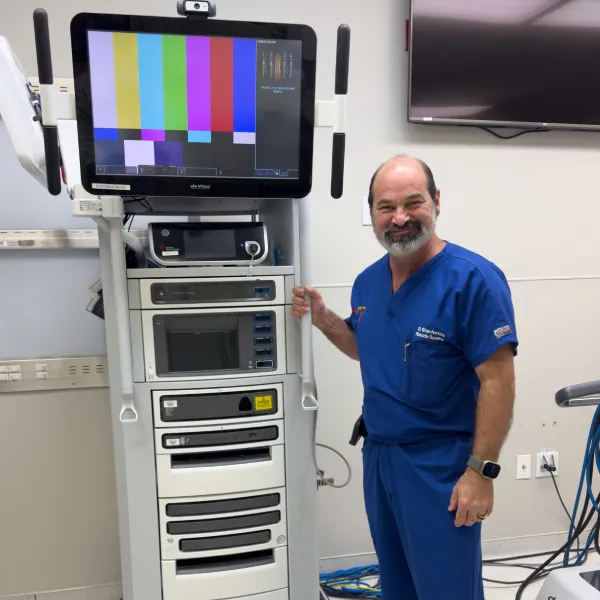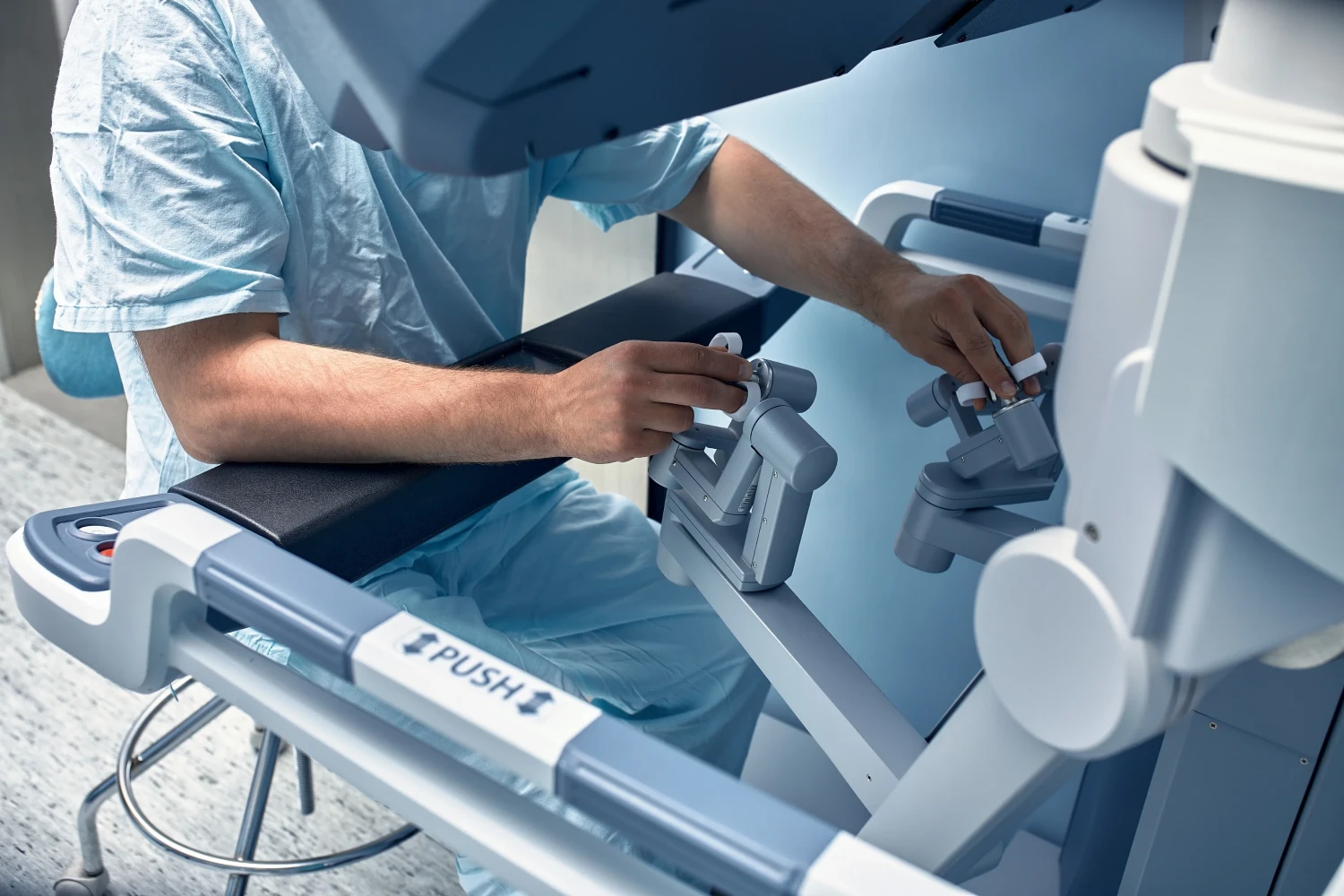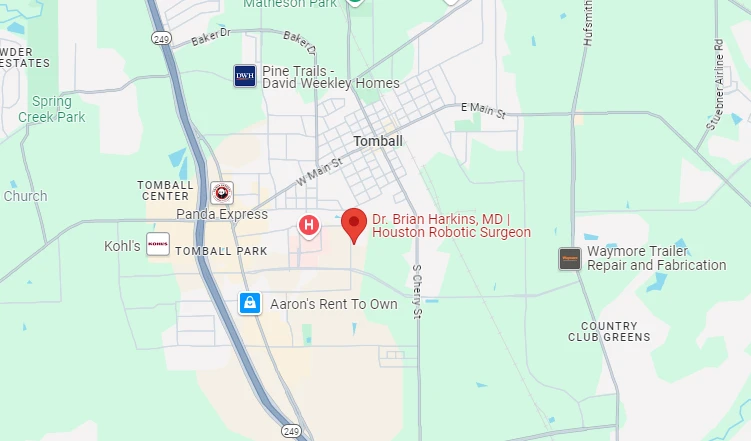
Short answer: Yes—although diarrhea is not listed among every hernia symptom, an inguinal hernia that becomes incarcerated or strangulated can obstruct the bowel, disrupt normal bowel movement patterns, and trigger watery stool. When this occurs in the abdomen or groin area, it demands prompt hernia care by an experienced surgeon.
Living in Houston, TX, you probably know a coworker who has lifted heavy objects on a job-site and ended up with a visible bulge in the groin. The city’s high heat, industrial labor, and Tex-Mex diet combine to make risk factors like straining, dehydration, and core fatigue hard to avoid. When these pressures push a loop of intestine through a weak spot in the abdominal wall, a condition called an inguinal hernia happens. Below you’ll learn why diarrhea sometimes rides shotgun, when it becomes an emergency, and which treatment options—from laparoscopic surgery to open herniorrhaphy—can quickly restore your digestive health.
A hernia is a condition that develops when tissue, most often a portion of the bowel, pushes through a weak area of connective tissue or muscle in the abdominal wall. In the groin this opening is called the inguinal canal. Hernia occurs in both men and women, may be present at birth, or can develop over time due to chronic cough, weight gain, or frequent lifting of heavy objects.
In a small, reducible hernia, the protruding tissue slides back into place when you lie down. Bowel transit remains smooth, so constipation or diarrhea seldom appear. Problems arise when the loop of intestine becomes stuck—an incarcerated hernia—or tightly squeezed, a strangulated hernia. At that point extra intestinal motility is triggered, leading to watery stools in an attempt to clear the partial blockage.
Comparing Typical vs. Emergency Symptoms
| Symptom | Simple Reducible Hernia | Incarcerated Hernia | Strangulated Hernia |
| Groin bulge | Soft, disappears when reclining | Firm, non-reducible | Rock-hard, discolored |
| Pain level | Dull ache after activity | Sharp, constant groin pain | Severe, escalating, may radiate inside the abdomen |
| Diarrhea | Rare | Possible watery stool | Common, may contain blood or mucus |
| Nausea / Vomiting | Seldom | Frequent | Intense, persistent |
| Fever | Unlikely | Possible low-grade | High, systemic |
| Ability to pass gas/stool | Normal | Reduced | Absent |
Key point: Persistent diarrhea plus a stuck groin bulge deserves same-day evaluation at a Houston ER. Fast care can mean laparoscopic hernia repair instead of a risky midnight open operation.
When part of the intestine is squeezed, normal transit halts above the obstruction. The trapped segment secretes fluid while the upstream bowel increases peristalsis. That rapid motility forces liquid stool toward the rectum, resulting in frequent, urgent trips to the bathroom. If the blood supply is compromised, inflammation adds more fluid and sometimes blood to the mix.
Summer highs above 90°F make construction crews and weekend athletes sweat heavily, which thickens the blood, depletes electrolytes, and raises intra-abdominal pressure during exertion. A chronic cough from seasonal allergies or refinery fumes can also strain the abdominal wall, increasing the risk that a hernia may poke through.
Houston’s plates overflow with brisket, queso, and spicy chilies. Fat and capsaicin both speed intestinal transit, so any partial blockage from an inguinal or femoral hernia can feel worse after a fiery lunch. Add a few margaritas, and you may find yourself toggling between constipation one day and diarrhea the next.
During your visit, the surgeon will inspect for a groin bulge, ask you to cough, and note any uncomfortable symptoms such as burning, pulling, or groin pain. A small hernia may be gently reduced; an incarcerated mass will not budge.
Blood tests can identify infection, electrolyte imbalance from diarrhea, or dehydration common in Houston’s hot climate.
If the hernia is small and completely reducible, your doctor may recommend watchful waiting plus lifestyle changes: a light abdominal belt, strengthening abdominal muscles, fiber-rich diet to avoid constipation, and avoiding sudden strain. Diarrhea tied to food poisoning usually settles with hydration and dietary rest.
Once a hernia incarcerates—or if your job involves repeated lifting—surgery may be advised. Houston’s medical centers offer:
Regardless of approach, a properly placed mesh reinforces the connective tissue and closes the type of hernia defect, preventing future bowel slippage.
Call 911 or head to the nearest ER if you experience:
Early arrival means the surgical procedure can often remain laparoscopic, sparing extra recovery time.
Yes. A chronic or forceful cough spikes pressure inside the abdomen. Over time that constant force can weaken the abdominal wall’s connective tissue. Once the barrier thins, part of the intestine may push through, forming a hernia bulge in the groin. Managing allergies or lung disease can lower this risk.
Absolutely. Straining during hard bowel movements raises intra-abdominal pressure significantly, which can enlarge an existing hernia or turn a reducible defect into an incarcerated hernia. A fiber-rich diet, adequate fluid intake, and regular activity are essential parts of preventive hernia care.
The most common types of hernias include inguinal, femoral, umbilical, incisional, and hiatal hernias. Inguinal hernias occur in the groin, femoral hernias just below the groin crease, umbilical hernias at the belly button, incisional hernias along prior surgical scars, and hiatal hernias inside the chest at the diaphragm opening.
Some patients with chronic pain, nausea, or bowel obstruction from an untreated hernia eat less to avoid discomfort, leading to unintended weight loss. Strangulated hernias can also produce systemic illness, further lowering appetite. Any unexplained weight change warrants prompt medical evaluation.
Many desk-based employees return within 2 weeks, while those who lift heavy objects may need 4–6 weeks to allow the abdominal wall to regain tensile strength. Your surgeon tailors restrictions based on incision size, mesh placement, and individual healing factors.
Yes. Pure tissue repairs like Bassini or Shouldice techniques sew muscle layers together without mesh. They’re often chosen for small defects, mesh allergy, or infection concerns. However, recurrence rates can be higher for larger or high-tension repairs, so discuss the best approach with your surgeon.
Although less common than in men, women can develop inguinal hernias, especially after pregnancy, repetitive lifting, or prior pelvic surgery. Symptoms may mimic ovarian or groin ligament pain, so a targeted exam and imaging are critical for correct diagnosis and timely hernia repair.
No. A hiatal hernia occurs where the stomach slips through the diaphragm into the chest, causing heartburn or reflux, not groin pain. If you have discomfort low in the abdomen or a visible groin bulge, another type of hernia—such as inguinal or femoral—should be ruled out.
High blood sugar impairs collagen cross-linking and delays wound healing. Post-operative incisions in diabetics may therefore weaken, giving rise to incisional hernias months or years after surgery. Tight glucose control and abdominal binders reduce this risk.
For many patients robotic surgery means smaller incisions, enhanced 3D visualization, and less post-operative pain. Those benefits can speed recovery, shorten hospital stays, and facilitate a quicker return to work. However, individual anatomy, hernia size, and insurance coverage all factor into determining overall value.




Dr. Brian Harkins is a renowned surgeon specializing in advanced, minimally invasive, and robotic surgical techniques. With a dedication to innovation and personalized patient care, he has transformed countless lives by delivering exceptional outcomes.

I want a website like this, where do i start?